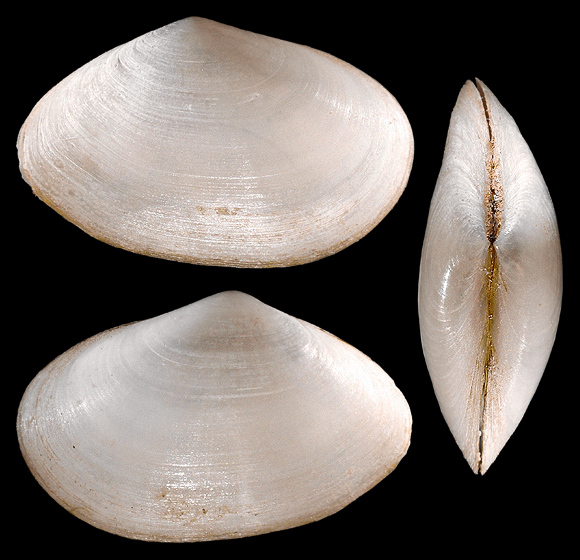
Deposit feeder in the infralittoral down to the continental shelf.
Original taxon: Mactra alba.
The shell of this species is similar to that of longicallus but differs in having a more rounded posterior side, and is devoid of radial microsculpture. 8m deep, on muddy sand, Taşucu, Silifke, Mersin province, SE. Turkey. 16,05mm.
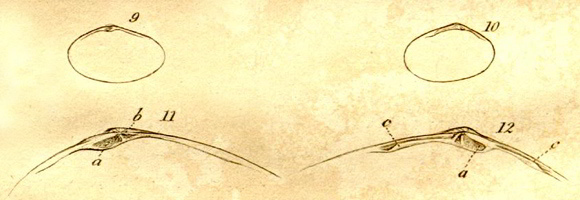
9-10: Mactra alba on the natural size. — 11-12: The hinge of the same magnified. (a.a) The spoon-shaped cavity. (b) A small tooth. (c.c) Remote teeth. — By S. V. Wood: “Observations on the hinges of British Bivalve shells”, Transactions of the Linnean Society of London, 6, 1802.
« I believe we are indebted for the discovery of this shell to that accurate conchologist, William Boys, Esq., who found it on the Sandwich shore, where I have since met with it in abundance. The hinge has the true spoon-shaped cavity peculiar to the genus Mactra, with a small tooth situated close to it in the upper valve, which has no remote teeth. The lower valve is provided with two. »
« I believe we are indebted for the discovery of this shell to that accurate conchologist, William Boys, Esq., who found it on the Sandwich shore, where I have since met with it in abundance. The hinge has the true spoon-shaped cavity peculiar to the genus Mactra, with a small tooth situated close to it in the upper valve, which has no remote teeth. The lower valve is provided with two. »
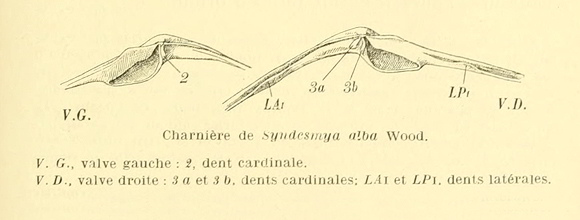
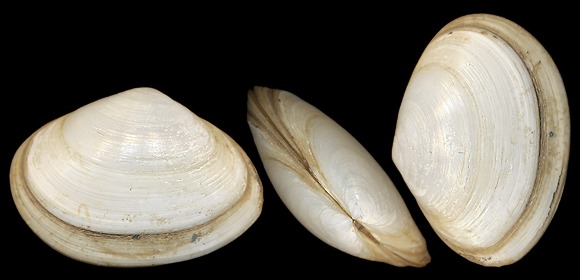
« Small (up to 25mm long), thin and fragile shell. Oval shape, rather flat with thin concentric growth lines. The shells are shiny white and somehow transparent. Abra alba lives rather deep in the bottom and feeds on sediment by means of long, individually separated stretchable siphons. » – Degraer & al.: The macrobenthos atlas of the Belgian part of the North Sea, Brussel 2006.
A solid specimen trawled in the Smith’s Knoll, off Norfolk county, East of England, Great Britain. 18mm.
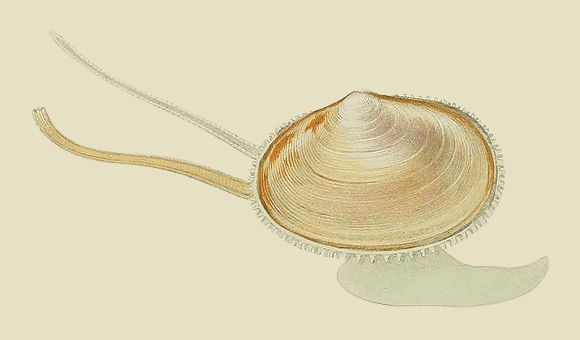
« The mantle is thin and for the most part colorlessly transparent, only the edge of the mantle is thickened and yellowish and covered with short, conical papillae. The siphonal extensions can expand over twice the length of the shell. Their muscle fibers make them appear striped and curled. The inhalant tube has six teeth on the edge, the exhalant one is finely notched. » – op. cit. p.109.